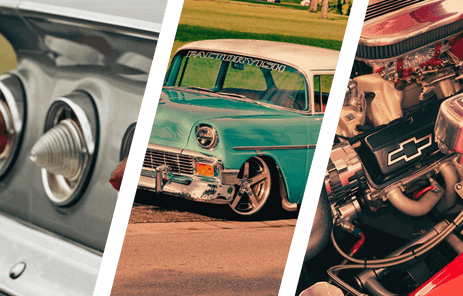We previously showed you a couple of videos from QA1 about installing the company’s new front and rear suspension systems into this C10 truck. The only thing left to do, is adjust everything so the truck is ready to roll. This video walks you through the process of quickly and easily adjusting the suspension for optimal performance.
One of the first adjustments to make is to set ride height. Next, you’ll want to measure the camber to ensure it is within the window of negative 1/2-degree to negative 1-degree. To measure camber, Damien uses a small chain magnetically affixed to the fender.
After setting camber, you’ll want to look at the toe. “To set the toe, we’re just going to do it with the old tape measure method,” Damien explained. He marked a spot on the front and rear of the tires on both sides so they can measure left to right. You’ll want toe to measure roughly 1/16-inch different from the front of the tire to the rear, with the front being the smaller measurement. “Also make sure your steering wheel is centered before you take the measurement,” Bill said.
With the front suspension adjusted, it’s time to move to the rear and get the pinion-angle setup. Too much or too-little angle puts unwanted pressure on U-joints, and can cause vibration or premature failure of components. Bill uses a gravity driven angle finder .
With the driveshaft back in, the driveshaft itself measures between 0 and 1-degrees. Bill then measured the angle of the rearend pinion and got an angle of between 2 and 3 degrees. The difference between the output shaft and the pinion is roughly 3 degrees, and the goal is to land in the sweet spot, between 1 1/2 degrees and 2 1/2 degrees.
With the pinion angle set, it’s time to look at the wheel base, which is adjustable with the rod ends on the trailing arms. To do this, just measure from the back edge of the front wheel to the back edge of the rear wheel.
The guys are almost done with their adjustments, but still need to do set the Panhard bar, which you just want to make sure is level with the truck at ride-height, and then level the sway bar. The final adjustment is shock valving.
With that completed, your at-home adjustments are all done and you can send it to an alignment shop for fine-tuning if you so desire. Otherwise, you can take it out of the garage and throw it around the road to test out your new QA1 suspension system!

You might also like
Chevrolet Brought The Heat To SEMA 1996
Chevrolet brought multiple factory show vehicles to SEMA 1996, including two hot-rodded Monte Carlos and two innovative S-10s.
























